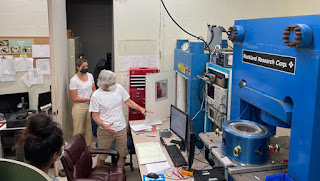Data collected by NASA’s Parker Solar Probe bolsters theories previously put by University of Michigan researchers about one of the sun’s greatest mysteries—why its outer atmosphere is hotter than its fiery surface.
Two years ago, U-M engineers predicted when the probe would pass a constantly moving, invisible barrier in the sun’s upper atmosphere called the Alfven point. They also anticipated a strange phenomenon beyond that point, which heats elements to different temperatures.
Findings announced by NASA, contained in a trio of research papers, support the accuracy of both predictions. The data behind those studies expands what we know about the sun’s corona, helping hone predictive modeling to protect Earth’s power grid from potentially damaging solar activity—when the sun hurls gobs of its plasma at our planet.
“While we don’t know how the heating happens, we were able to predict where it happens, and now Parker Solar Probe has entered this zone of heating,” said Justin Kasper, U-M professor of climate and space sciences, a principal investigator for the Parker mission and first author of one of the papers appearing in Physical Review Letters.
“It’s hard to overstate how important this is for our understanding of space weather, as now we know the spacecraft will be able to see how heating happens in the corona. Imagine trying to predict weather patterns and finally being able to measure how the air is heating before a storm.”





















.jpg)



.jpg)

